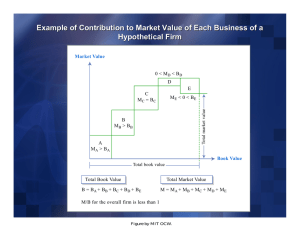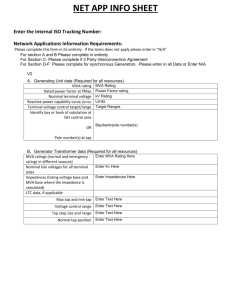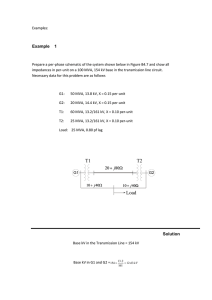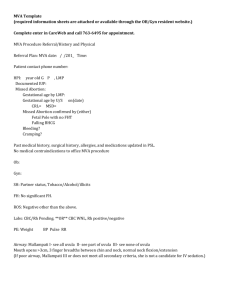Calculation, Use of Reserved Capacity Multipliers for Intl
advertisement
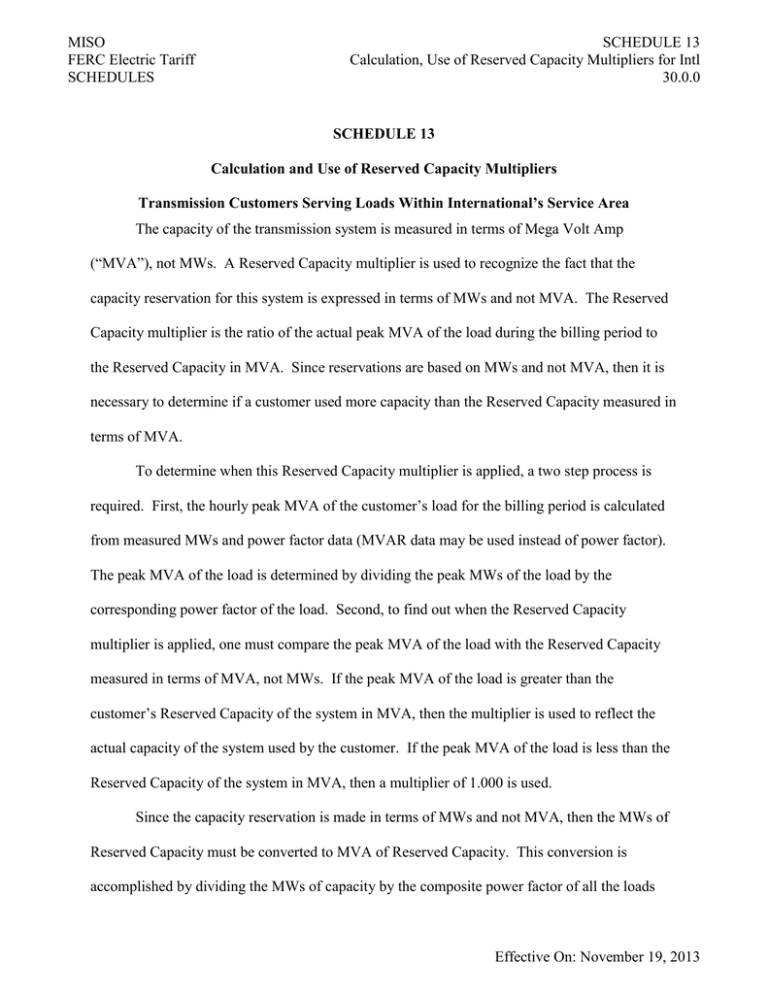
MISO FERC Electric Tariff SCHEDULES SCHEDULE 13 Calculation, Use of Reserved Capacity Multipliers for Intl 30.0.0 SCHEDULE 13 Calculation and Use of Reserved Capacity Multipliers Transmission Customers Serving Loads Within International’s Service Area The capacity of the transmission system is measured in terms of Mega Volt Amp (“MVA”), not MWs. A Reserved Capacity multiplier is used to recognize the fact that the capacity reservation for this system is expressed in terms of MWs and not MVA. The Reserved Capacity multiplier is the ratio of the actual peak MVA of the load during the billing period to the Reserved Capacity in MVA. Since reservations are based on MWs and not MVA, then it is necessary to determine if a customer used more capacity than the Reserved Capacity measured in terms of MVA. To determine when this Reserved Capacity multiplier is applied, a two step process is required. First, the hourly peak MVA of the customer’s load for the billing period is calculated from measured MWs and power factor data (MVAR data may be used instead of power factor). The peak MVA of the load is determined by dividing the peak MWs of the load by the corresponding power factor of the load. Second, to find out when the Reserved Capacity multiplier is applied, one must compare the peak MVA of the load with the Reserved Capacity measured in terms of MVA, not MWs. If the peak MVA of the load is greater than the customer’s Reserved Capacity of the system in MVA, then the multiplier is used to reflect the actual capacity of the system used by the customer. If the peak MVA of the load is less than the Reserved Capacity of the system in MVA, then a multiplier of 1.000 is used. Since the capacity reservation is made in terms of MWs and not MVA, then the MWs of Reserved Capacity must be converted to MVA of Reserved Capacity. This conversion is accomplished by dividing the MWs of capacity by the composite power factor of all the loads Effective On: November 19, 2013 MISO FERC Electric Tariff SCHEDULES SCHEDULE 13 Calculation, Use of Reserved Capacity Multipliers for Intl 30.0.0 being served from the transmission system. This composite power factor is calculated for the hour of the system peak load (MW) on August 14, 1995, by first summing all the hourly integrated MW flows and the hourly integrated MVAR flows served by this system and then calculating the power factor. This results in the transmission system composite power factor of .95 lagging. The Reserved Capacity in MVA can now be calculated by dividing the Reserved Capacity in MWs by the composite power factor for the system. The Reserved Capacity multiplier is calculated as follows: Reserved Capacity multiplier = (Customer Peak MW Demand ÷ Customer Power Factor @ Peak MW Demand) ÷ (Customer MW Reservation ÷ Composite System Power Factor) Only Reserved Capacity multipliers of 1.000 or greater apply. Power Factor Determination International, at its discretion will install the necessary metering to determine real and reactive hourly demand and energy. The Power Factor (P.F.) for the billing period will be determined by using the peak hourly real power (MW) demand and the corresponding reactive (MVAR) demand. The peak MVA load is determined by dividing the peak MW demand by the corresponding power factor for the billing period. Effective On: November 19, 2013 MISO FERC Electric Tariff SCHEDULES SCHEDULE 13 Calculation, Use of Reserved Capacity Multipliers for Intl 30.0.0 SCHEDULE 13A Power Factor Penalty Multipliers For International Transmission Company The rate and charges under this Tariff are based on the customer maintaining a power factor of not less than .85 lagging. A power factor less than .70 lagging will not be permitted and the customer will be required to install at his own expense such corrective equipment as may be necessary to improve power factor. For load power factors below .85 lagging, a power factor penalty multiplier will be applied to the total amount of Reserved Capacity charge including the Reserved Capacity multipliers. See Power Factor Multiplier Table. Power Factor Multiplier Table Power Factor Penalty Multiplier .850 or higher 1 .800 to .849 1.214 .750 to .799 1.428 .700 to .749 1.642 Transmission Customers - Transmitting Power Through International’s Service Area Transmission Customers that obtain transmission service to transmit power through International’s transmission system are expected to control the supply of kilovars at Points of Receipt and Points of Delivery such that, under normal conditions, the quantity of kilovars passing from one transmission system to another will be near zero. Effective On: November 19, 2013


